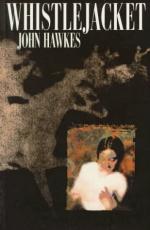|
This section contains 658 words (approx. 3 pages at 300 words per page) |

|
Throughout his career, Hawkes has experimented with narrative techniques. Many critics consider this a weakness, proclaiming that Hawkes sacrifices characterization and plot to his experiments, rendering his novels shallow. Some recent literary critics think that his experimentation belongs to a dead literary tradition — the early Modernism of the 1930s — during which many prominent writers experimented with fictional form and techniques. For these critics, Hawkes's recent novels seem old fashioned and no longer significant to a literary community that has moved away from technical experimentation.
A different complaint about Whistlejacket comes from reviewers who note that the portrayal of the painter George Stubbs is historically inaccurate. Stubbs is a real-life figure whose paintings of animals are still held in high regard by art historians. Hawkes takes liberties with Stubbs's life. He switches around events, changes names and places, and alters the identities of the people in some...
|
This section contains 658 words (approx. 3 pages at 300 words per page) |

|




